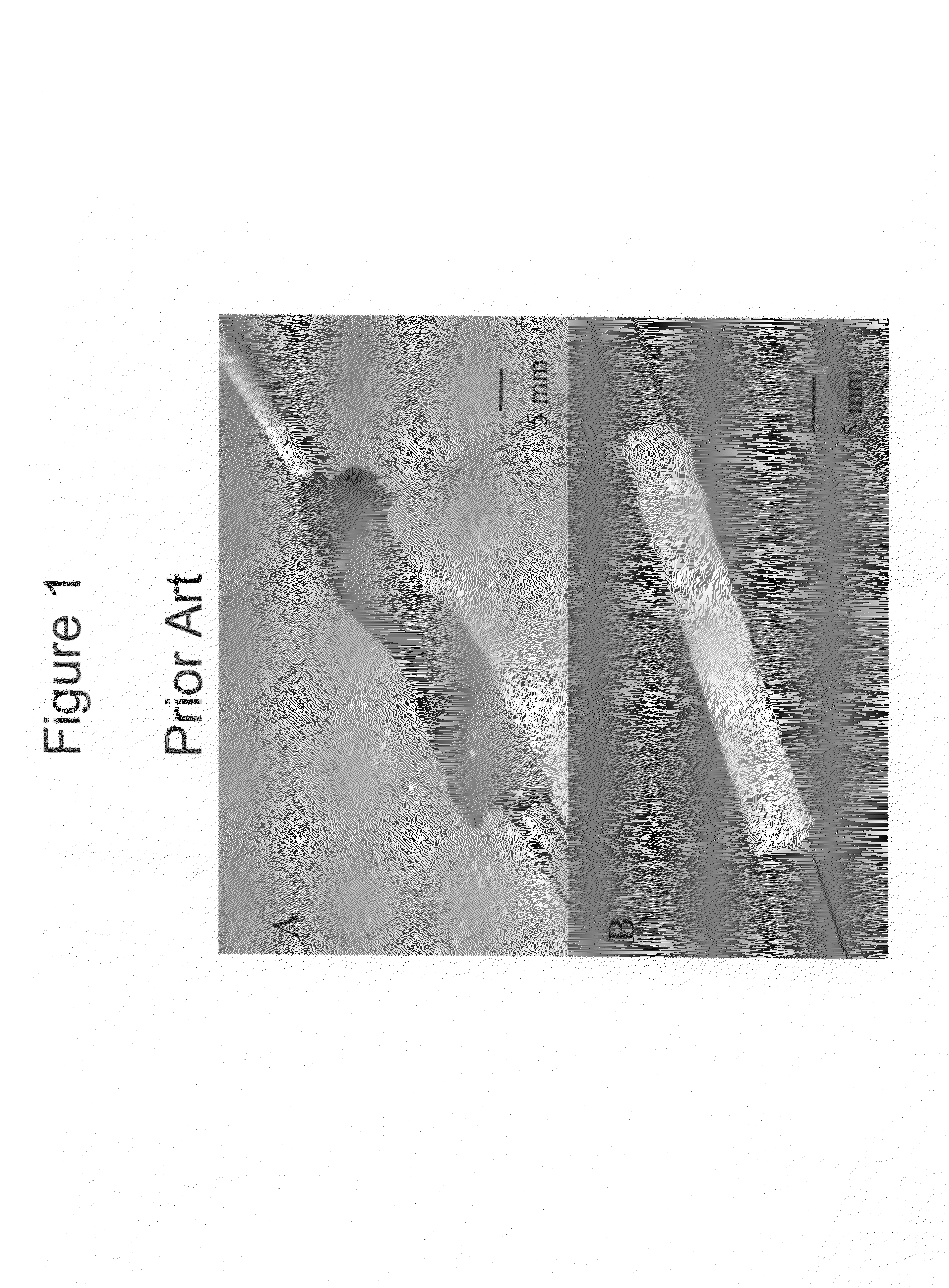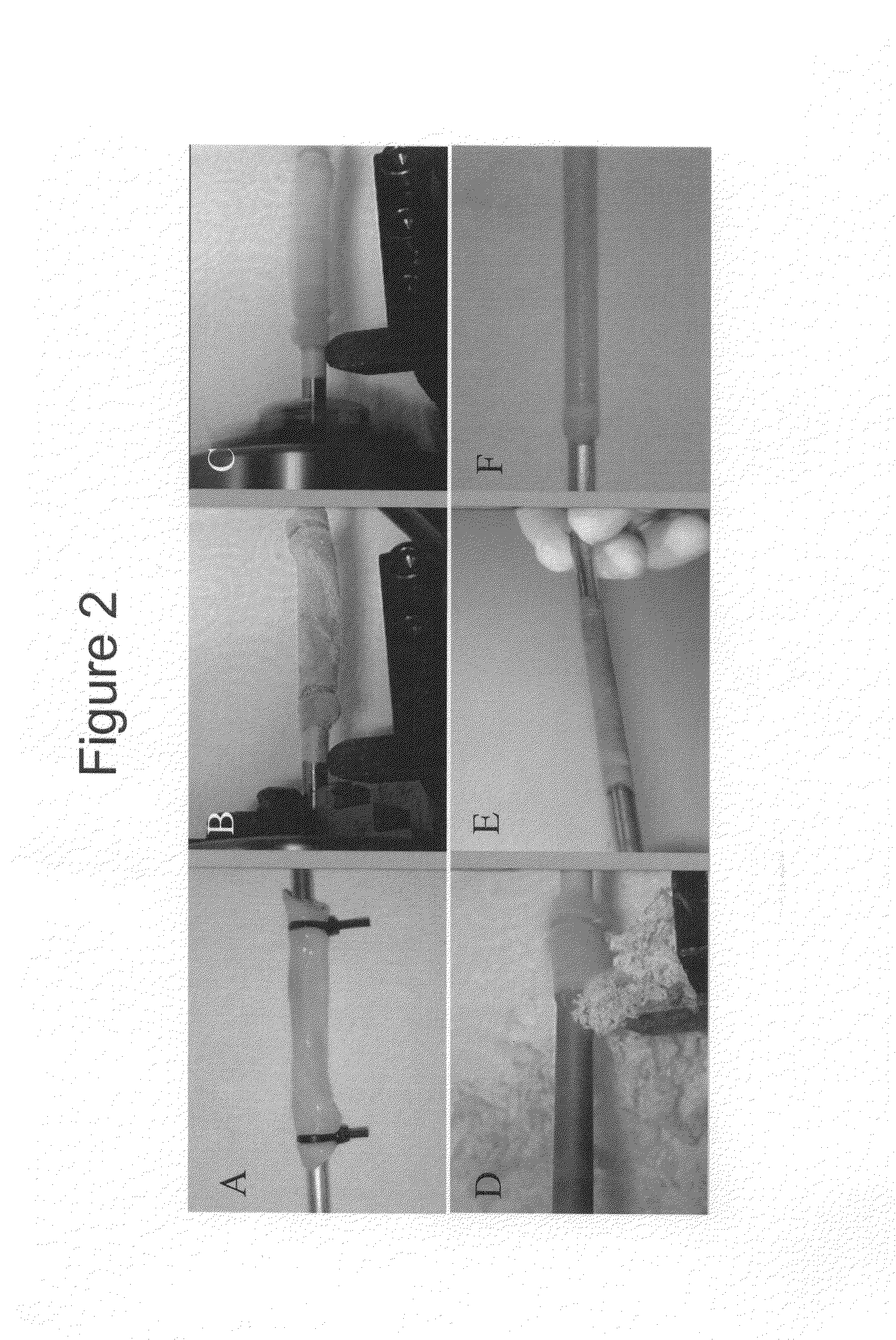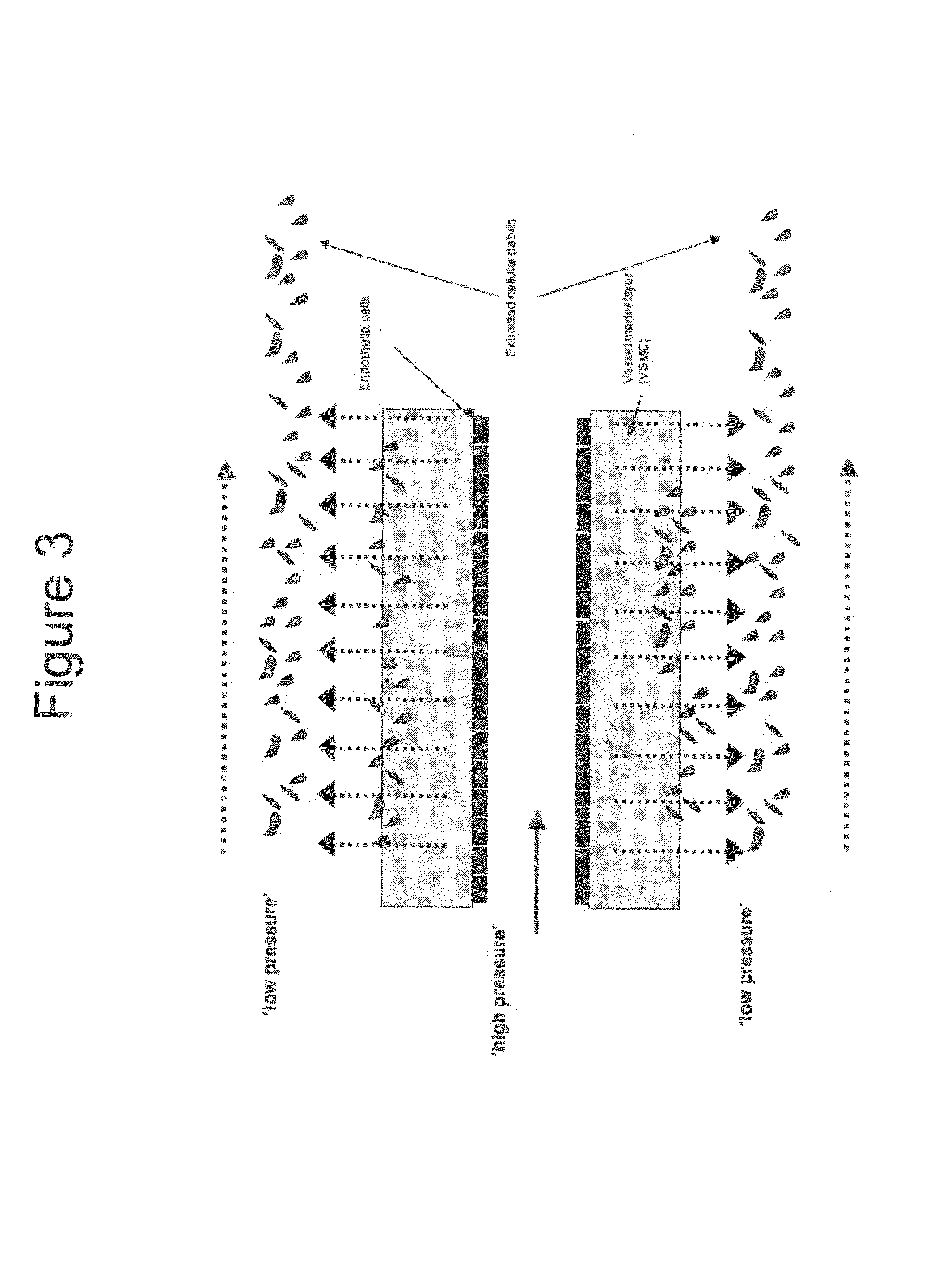Decellularized grafts from umbilical cord vessels and process for preparing and using same
a technology of umbilical cord vessels and grafts, which is applied in the field of tissue engineering, can solve the problems of reducing the range and variance of occlusion of blood vessels, limiting the current treatment, and limiting the flow of oxygen-rich blood to organs downstream of severely occluded blood vessels, etc., and achieves a significant reduction of range and variance. , the effect of reducing the range and varian
- Summary
- Abstract
- Description
- Claims
- Application Information
AI Technical Summary
Benefits of technology
Problems solved by technology
Method used
Image
Examples
example 1
[0090]FIG. 1 illustrates a whole human umbilical cord (FIG. 1A), and an umbilical vein obtained from the umbilical cord by a manual dissection procedure of the prior art (FIG. 1B). Typically, manual dissection methods require about one to about three hours to produce one viable vessel, and extensive mechanical variation is displayed across the manually dissected vein. These tedious and error prone dissection methods of the prior art have restricted the veins application, unless the vessel is extensively cross-linked and reinforced with synthetic polymers (Dardik et al., 1988; and Dardik, 1995).
[0091]FIG. 2 illustrates the unique automated dissection method of the present invention. Using the automated dissection method of the present invention, an umbilical vein can be extracted from the umbilical cord in a maximum of about 2 minutes, producing a mechanically uniform material (Daniel et al., 2004; McFetridge et al., 2004; and Daniel et al., 2004). Briefly, the method of the present ...
example 2
[0107]By progressively modifying cell culture conditions to mimic the environment an implanted construct might encounter in vivo, the effect of mechanical force and hypoxia on hVSMC proliferation, migration, and remodeling processes is assessed. In order to quantify these distinct environmental conditions, three areas are investigated: (1) traditional cell culture systems, (2) introduction of mechanical stress, and (3) exposure to hypoxic conditions. Variation between the three areas is quantified using standardized experimental and analytical methods.
[0108]First, the ability of the HUV bioscaffold to provide a favorable environment for early regenerative events is assessed. To quantify the regenerative capacity of the decellularized HUV bioscaffold under traditional ‘static’ tissue culture conditions using primary human SMC is investigated. Cell proliferation and viability using standard histological and immunohistochemical techniques is investigated. Image analysis software assess...
example 3
[0114]In another embodiment of the present invention, the tissue graft of the present invention is utilized for the development of a multi-functional ex vivo acellular bioscaffold for oral wound repair. Due to structural and morphological variation between the upper (lumen) and lower (ablumen) surfaces of the vascular scaffold, the smooth, type IV collagen surface is disposed outermost, in contact with the oral cavity, and the more fibrous surface of type I collagen and hyaluronic acid is disposed directly on top of the wound site. These investigations examine the rate of cell re-population and remodeling of the scaffold from cells directly within the wound site. The second application of the present invention in oral wound repair is as a tissue engineered construct seeded with autologous cells, then implanted as functional tissue. The experiments described herein support both applications by gaining a thorough understanding of the material's ability to re-integrate with biological ...
PUM
| Property | Measurement | Unit |
|---|---|---|
| temperature | aaaaa | aaaaa |
| temperature | aaaaa | aaaaa |
| temperature | aaaaa | aaaaa |
Abstract
Description
Claims
Application Information
 Login to View More
Login to View More - R&D
- Intellectual Property
- Life Sciences
- Materials
- Tech Scout
- Unparalleled Data Quality
- Higher Quality Content
- 60% Fewer Hallucinations
Browse by: Latest US Patents, China's latest patents, Technical Efficacy Thesaurus, Application Domain, Technology Topic, Popular Technical Reports.
© 2025 PatSnap. All rights reserved.Legal|Privacy policy|Modern Slavery Act Transparency Statement|Sitemap|About US| Contact US: help@patsnap.com



